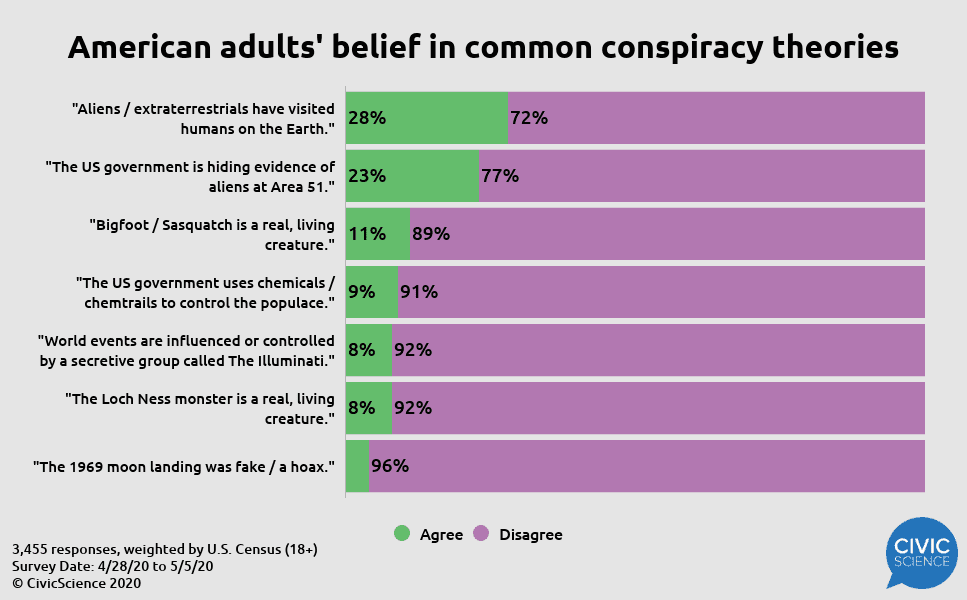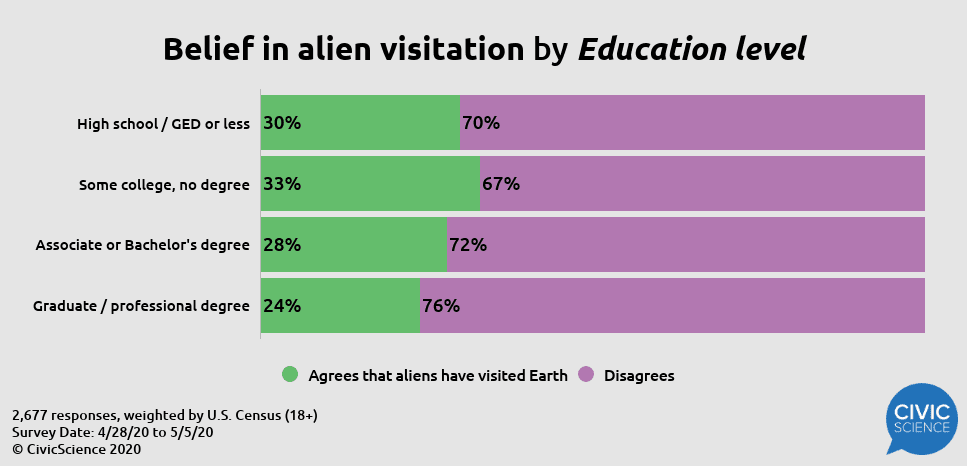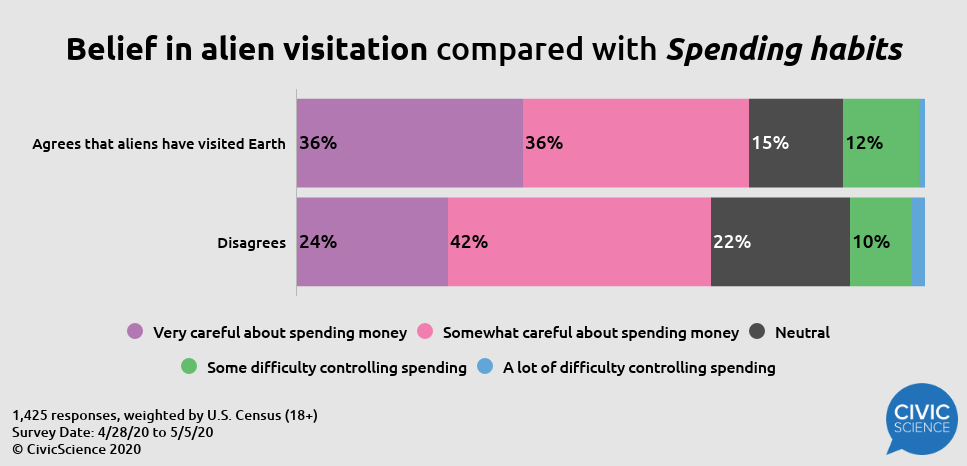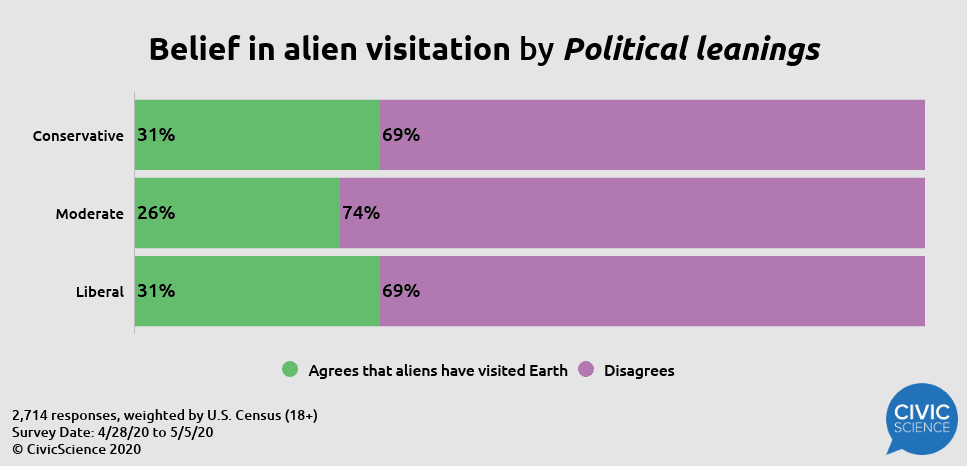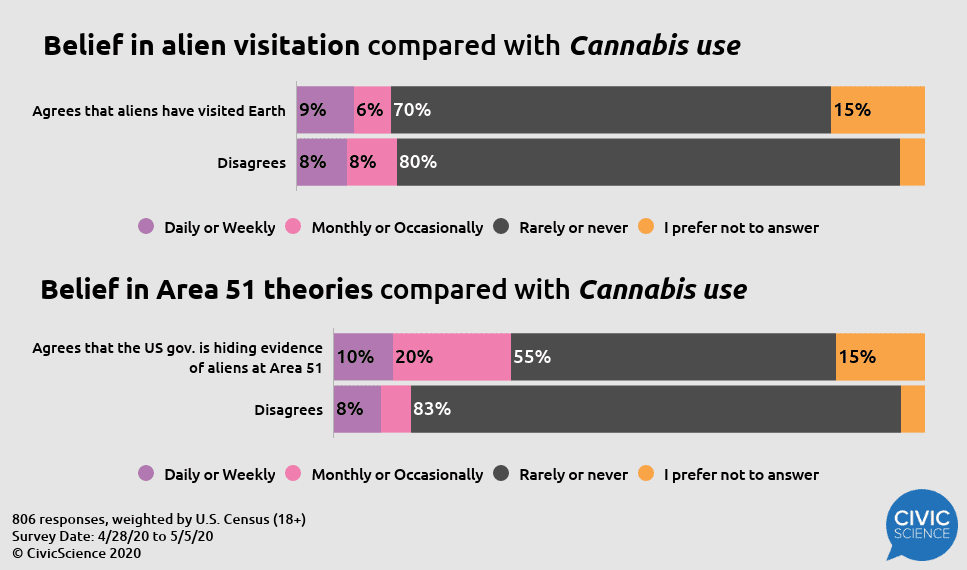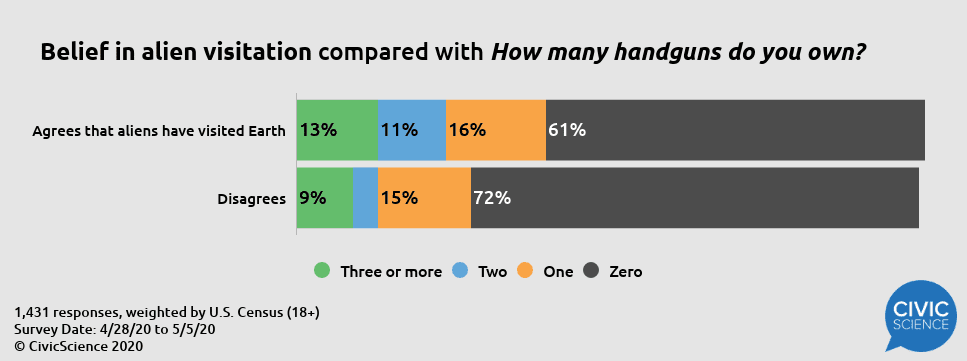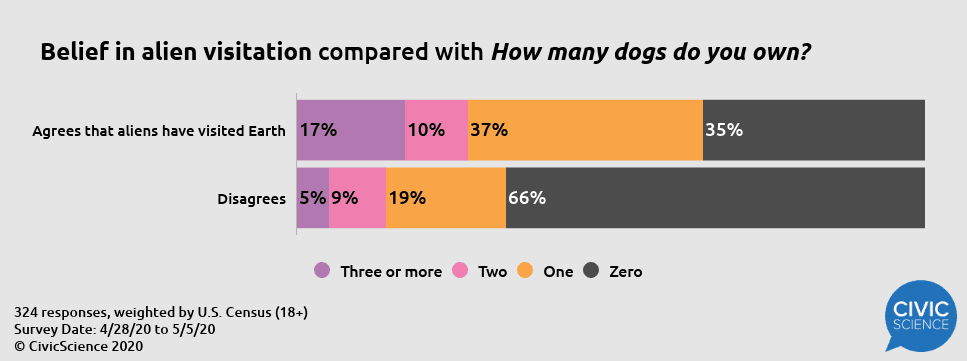Editor’s Note: This is Part 1 of 2 in a CivicScience series on Americans’ belief in common counterculture narratives, or conspiracy theories. Check back on Monday, May 11 for Part 2.
Conspiracy theories have been part of the fabric of American life for decades. From the overtly political to the out-of-this-world, these counterculture narratives have been a source of fascination for Americans over the years — often regardless of whether or not one believes in them.
And, according to a recent CivicScience survey, it turns out that, despite being dismissed as “fringe,” more people believe in common conspiracy theories than you might have imagined.
CivicScience surveyed 3,445 U.S. adults (ages 18 and up) about whether they agreed or disagreed with a series of statements. The majority (59%) of respondents said they didn’t agree with any of these common conspiracy theories. Of course, that means 4 in 10 adults did ascribe to at least one of the following statements, listed in order of popularity:
As you can see, Americans’ belief in extraterrestrial visits to the Earth (and the US government’s alleged efforts to hide this) far outpaces belief in any other conspiracy theory that CivicScience asked about. Today in this two-part series, we’ll be studying alien visitation and Area 51 believers in depth.
Close Encounters of the Third Kind
At least 1 in 4 American adults believes that aliens have visited humans on the Earth.
Belief in alien visitation skews more male (53% of believers) than female (47%), and peaks in the age range of 35 to 54 (31% of Gen Xers believe).
Education level is an indicator of belief in alien visitation. One-third of those who’ve had some college classes but no degree say they believe, compared with one-quarter of those with graduate / professional degrees:
And while income wasn’t a huge factor (believers earn slightly less on average), believers were far more likely to say that they are “very careful” about spending money.
It seems this is the rare issue that both political parties can agree on: conservatives and liberals were equally likely to believe (31%), while moderates were more skeptical.
Alien visitation believers were more likely than non-believers to agree with the national government’s response to the coronavirus.
It turns out that a strong majority (62%) of Americans who think aliens have visited humans on the Earth also believe that the U.S. government is hiding evidence of this at the infamous Area 51 military facility in Nevada.
Similarly to belief in alien visitation, belief in the existence of extraterrestrial evidence at Area 51 also skewed more male than female (53% to 47%). Again, conservatives and liberals were equally likely to believe, and moderates less so. In this case, Gen Z (ages 18 to 24) joined Gen X as the two generations most likely to believe.
Take Me To Your Leader
Don’t be alarmed if this all feels like an episode of The X-Files. Those who enjoyed the adventures of Mulder and Scully back in the 90s were substantially more likely to believe in alien theories than those who didn’t.
And, in general, believers (64%) were far more likely to say they love or like sci-fi movies than non-believers (42%).
That’s Pretty Far Out, Man
Cannabis use was far more common among Area 51 believers than it was among non-believers, though usage was roughly even between alien visitation believers and non-believers. Note that both alien visitation believers and Area 51 believers were each many times more likely than non-believers to respond to this question with “I prefer not to answer.”
We won’t speculate as to why, but it turns out that alien visitation believers were also significantly more likely than non-believers to own handguns.
And finally, whatever you think of alien visitation believers, there’s no denying that they love their dogs. A lot.
Overall, CivicScience data show that the stereotype of an alien visitation believer as a tinfoil hat-wearing societal outcast just doesn’t hold water. A quarter of those with college diplomas (or more) believe in alien visitation, and nearly half (46%) of all believers earn more than $75,000 per year. Sure, there may be some idiosyncrasies involved — handguns, dogs, and cannabis come to mind — but it seems that there is a solid percentage of alien visitation believers in nearly every subsection of American society.
Check in to civicscience.com/latest on Monday, May 11 for insights into believers of Bigfoot, chemtrails, the Illuminati, and more.
